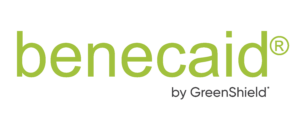In the group benefits industry, one of the newest trends in 2017 for businesses of all sizes is the increase in employee-directed benefits plans. These are different from typical, traditional insurance in that they give control over personalizing their coverage (choice in products, coinsurance, and deductible levels) and the allocation of the dollars spent on them to the employees.
Instead of providing a one-size-fits-all plan for your entire business, it is becoming increasingly popular for employers to provide a flexible benefits solution that allows each employee to pick benefits that will be of the most useful to them. It is a customizable solution for a workforce that is predominantly becoming filled with a generation who wants to customize anything and everything, right from the palm of their hands.
How Do Employee-Directed Benefits Work?
This type of insurance provides a basic health plan to all employees that are paired with an HSA (Health Spending Account).
The HSA provides freedom to employees because they can decide how they want to use their funds. They may choose to allocate them toward their plan deductible, or they might use the funds to pay out-of-pocket healthcare or wellness expenses.
How Do Employee-Directed Benefits Benefit Employees and Employers?
There are numerous ways in which employee-directed benefits can improve the lives of both employees and employers:
1. Making choices easy with technology
Along with more flexibility overall, employee-directed benefits also provide streamlined organization for keeping track of benefits and making claims. To effectively offer these benefit options to your staff, an online platform where both employers and employees can go to review and modify health plans and track spending is a must. An interactive, easy to use digital platform means a much more direct and educational approach to communication, a stereotypical problem spot for more traditional plans. Generation Y and Generation X employees want the language that is used in their health care benefits communication to be direct, concise, and clear; since many of the decisions are left up to the employees with self-directed plans, communication is vital to their success.
2. Employees do not have to pay for benefits they do not use
The traditional approach to health benefits is to give the same benefits to all employees, or classes of employees. This inevitably results in paying for benefits that many employees might never use – for example, an employee with 20/20 vision that has robust vision coverage will likely not find this benefit as valuable as an employee who regularly wears contacts or glasses would. With a flexible plan, employees can pick and choose the services they want and stop paying for the services that they will never use.
For example, an employee may be struggling with a mental health issue that they would like to have regular counselling for, but their physical health may not be as much of a current issue. A flexible plan will allow this employee to allocate funds that what otherwise be used for physical health programs to those that are more focused on mental health and wellness.
For most employees, this is ideal. A recent survey found that 66% of Canadian employees preferred flexible benefits. Another study focusing on Millennials indicated that 73% said that the ability to customize their benefits was an attractive option when looking for potential employment.
3. The focus is on prevention
Instead of putting the focus on curing diseases, illnesses, and injuries that have already occurred, employee-directed benefits allow the emphasis to be on prevention. Employees can modify their healthcare plans to emphasize making healthy choices and preventing diseases and illnesses from happening in the first place. Fitness programs, chiropractic care, and nutritionists are just some of the benefits that they can choose from to work on their health now, rather than trying to fix it in the future.
Benecaid has recently launched its new Honeybee platform which makes modern, comprehensive employee benefits easy to buy online and more affordable for small businesses. You can give your employees the flexibility of choice while easily controlling costs and allocating budget.
If you are interested in more information about Honeybee or Employee-Directed Benefits, contact your Executive Benefits Consultant or click here to book your free demo.



Comments are closed.